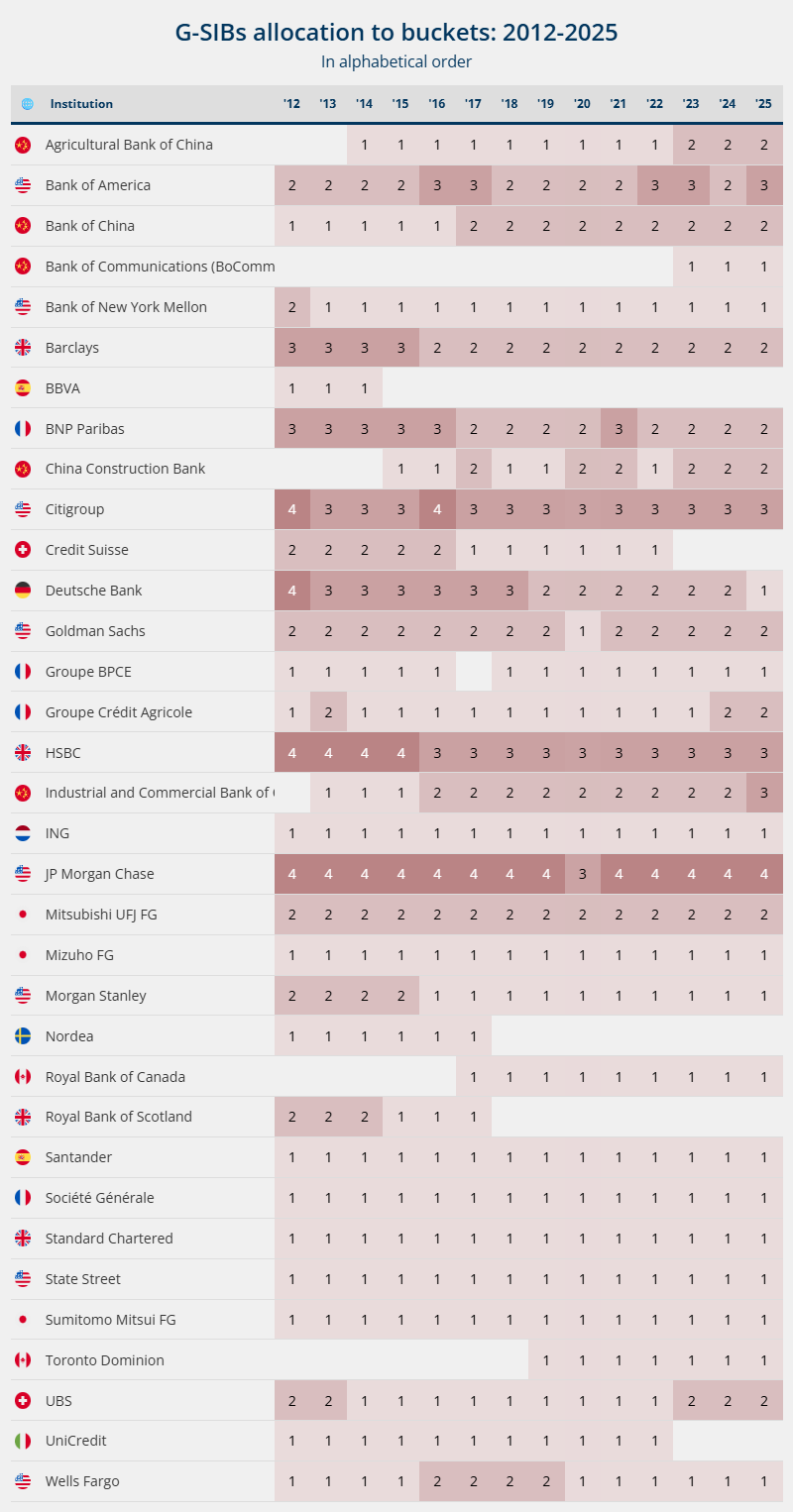Press enquiries:
+41 61 280 8477
[email protected]
Ref: 23/2025
- FSB publishes list of insurers subject to resolution planning standards with seventeen insurers, up from thirteen insurers in 2024.
- The FSB is also consulting on guidance on the scope of insurers that should be subject to recovery and resolution planning (RRP) requirements, to promote consistency in application across FSB member jurisdictions.
- The FSB reaffirms its decision to use the International Association of Insurance Supervisors (IAIS) Holistic Framework assessments instead of an annual identification of global systemically important insurers (G-SIIs).
The Financial Stability Board (FSB) today published a list of 17 insurers subject to resolution planning standards consistent with the FSB Key Attributes of Effective Resolution Regimes for Financial Institutions (Key Attributes).
Alongside this, the FSB launched a consultation on draft guidance outlining key criteria for authorities to consider when determining whether an insurer should be subject to RRP requirements. The draft guidance calls for authorities to evaluate an insurer’s nature, scale, complexity, substitutability, cross-border activities, and interconnectedness. It also highlights specific scenarios in which RRP requirements should always apply, such as when an insurer provides critical functions that cannot be easily substituted or when its failure could significantly impact financial stability or the real economy.
The Draft Guidance does not reintroduce the previous process for identifying G-SIIs. Instead, it focuses exclusively on determining which insurers should be subject to RRP requirements under the Key Attributes, with these decisions made at the national level. Being on the list does not imply that an insurer is systemically important.
The FSB has also published a statement reaffirming its decision to rely on the IAIS Holistic Framework assessments rather than reintroducing the annual identification of G-SIIs.
Notes to editors
In 2011, the FSB introduced policy measures to address systemic and moral hazard risks from systemically important financial institutions. In 2013, it identified an initial list of G-SIIs and applicable policy measures, in consultation with the IAIS and national authorities. In December 2022, the FSB announced that it would discontinue the annual identification of global systemically important insurers, deciding instead to utilise assessments available through the IAIS Holistic Framework to inform its considerations of systemic risk in the insurance sector and to publish annually a list of insurers subject to resolution planning standards aligned with the FSB Key Attributes. This first list was published in December 2024.
The FSB continues to consult with the IAIS on resolvability monitoring and public reporting for the insurance sector. Today, the IAIS launched consultation on guidance (“application papers”) on recovery and resolution. Further details of the IAIS Holistic Framework and the IAIS’ public consultation can be found on the IAIS website here and here.
The IAIS is a global standard-setting body whose objectives are to promote effective and globally consistent supervision of the insurance industry to develop and maintain fair, safe and stable insurance markets for the benefit and protection of policyholders and to contribute to the maintenance of global financial stability. Its membership includes insurance supervisors from more than 200 jurisdictions.
The FSB coordinates at the international level the work of national financial authorities and international standard-setting bodies and develops and promotes the implementation of effective regulatory, supervisory, and other financial sector policies in the interest of financial stability. It brings together national authorities responsible for financial stability in 24 countries and jurisdictions, international financial institutions, sector-specific international groupings of regulators and supervisors, and committees of central bank experts. The FSB also conducts outreach with approximately 70 other jurisdictions through its six Regional Consultative Groups.
The FSB is chaired by Andrew Bailey, Governor of the Bank of England. The FSB Secretariat is located in Basel, Switzerland and hosted by the Bank for International Settlements.
